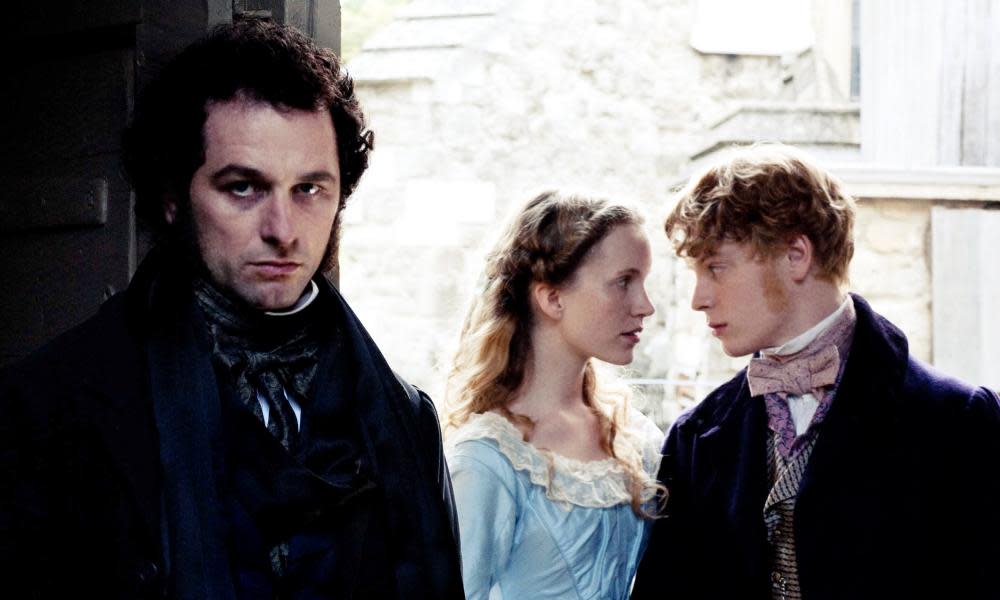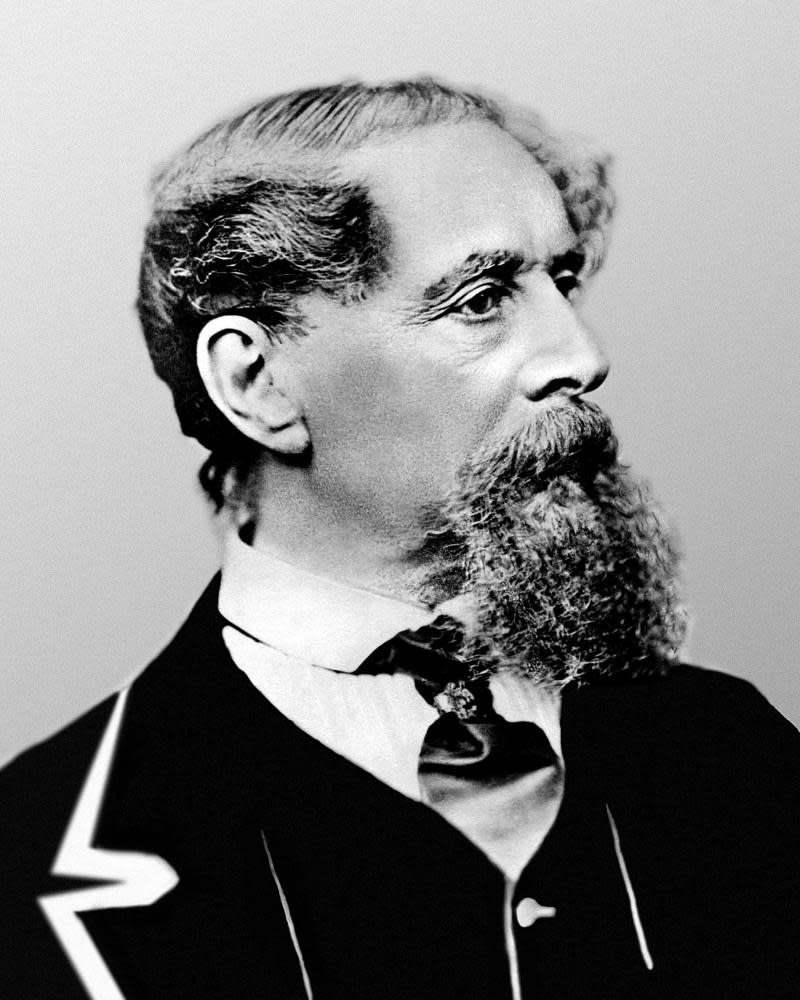The Mystery of Charles Dickens by AN Wilson review – a great writer's dark side

Near the end of The Mystery of Charles Dickens, AN Wilson quotes at length from a letter written by Philip Larkin to his lover Monica Jones. The poet has just reread Great Expectations, and is reflecting on the novelist’s attention-seeking tricks: “Say what you like about Dickens as an entertainer, he cannot be considered a real writer at all; not a real novelist.” It is a version of a complaint that has been made many times about Dickens the mere “entertainer”. “His is the garish, gaslit, melodramatic barn … where the yokels gape.” Yet, at the end of all his sentences of critical deprecation, Larkin’s final reflex is equally familiar: “However, I much enjoyed G.E. & may try another soon.”
Those with high literary standards have often enjoyed Dickens against their better judgment. In The Mystery of Charles Dickens, Wilson sides with the gaping yokels. He confesses the he has read Dickens with “obsessive rapture” since his childhood, but had to overcome the presumption, later educated into him, that his writing was insufficiently deep or sophisticated. “The death of Paul Dombey is so schmaltzy that we simply refuse to be moved, but then, damn it, we read and the tears well down our cheeks.” For Wilson, Dickens is an irresistible performer. One chapter of his book is devoted to “The Mystery of the Public Readings”, in which Dickens drove himself to near collapse (and made huge amounts of money) by touring America as well as Britain to perform readings from his work. In 1869, he had a stroke on stage in Chester, but still refused to stop the readings, partly because of the money but mostly because he was addicted to the instant responsiveness of his audience.

The highlight of his show was Bill Sikes’s murder of Nancy from Oliver Twist, in which, Wilson thinks, the novelist released some demonic aspect of himself – some yen for sexual violence – on stage. Murderous villains such as the gleefully sadistic Quilp in The Old Curiosity Shop, or the psychopathic John Jasper in The Mystery of Edwin Drood, were projections of his own cruelty. Wilson’s book is, you might say, bio-critical: “Dickens’s novels tell the story over and over again of his divided self,” he writes. The secrets of his life lie on the surface of his fiction. The dust jacket proclaims that the book goes “beyond standard narrative biography”. Which is to say that The Mystery of Charles Dickens does not reveal anything the previous biographers have not told us (indeed, it is conscientiously reliant on a small number of secondary sources). Instead, it shows, by a mixture of rational inference and I-feel-it-in-my-bones intuition, how the most powerful aspects of Dickens’s fiction drew on the most painful and secret aspects of his life.
The biggest secret of Dickens’s life, of course, was his clandestine relationship with Ellen (“Nelly”) Ternan, the young actor whom he first met when she performed at the Free Trade Hall in Manchester in The Frozen Deep, a play that he had written with his friend Wilkie Collins, and in which he himself was acting. She was 18; he was 45. For the next 13 years, Dickens paid for her to live in a series of discreetly located residences, where he would secretly visit her. The last of these was Windsor Lodge in Peckham, then a pleasant village outside London, with a railway station on the line from Dickens’s Kent home.
The 'seizure' that killed Dickens must have been induced by energetic sex, the dying novelist was then driven to his Kent home
Each chapter of Wilson’s book is a different “Mystery”, the first being what happened to most of the £22 for which Dickens cashed a cheque on the day before his death. Dickens must have given it to Nelly for housekeeping. Which means that he must have made a quick trip to Peckham and that the “seizure” that killed him must have been induced by some hyper-energetic sex with her. Which means that hasty measures must have been taken to heave the dying novelist into a carriage to be driven back to his Kent home. “Exit Nelly, stage left.” (This enjoyable fiction, which has been hazarded by others before Wilson, is partly withdrawn near the end of the book.)
Next is “The Mystery of his Childhood”. Wilson is hardly the first to suggest that Dickens’s fiction was shaped by what he calls “the grotesquely sad galanty show of his childhood”. He briskly takes us through the story of the penury, the period in the debtors’ prison, the aborted education, the banishment, aged 10, to menial labour in Warren’s Blacking warehouse. There is less stress than usual on the improvidence of Dickens’s father, John Dickens (whose self-relishing orotundity at least inspired the matchless idiolect of Mr Micawber). Instead, Dickens blamed his mother. The ludicrous (Mrs Nickleby) or monstrous (Mrs Clennam) mothers in his novels bear the imprint of “the deepest needs of mother-hate”. Wilson asserts that “his flawed relationship with his mother is the defining feature, of the man and of his art”. Yet his privations made him a great novelist. The Blacking warehouse “saved Dickens the novelist, just as grammar school and Cambridge would have destroyed him”.
We should be grateful Dickens was so screwed up. Great Expectations, Wilson believes, was a masterpiece of self-torment
Then there is “The Mystery of the Cruel Marriage”. Nothing has more tainted Dickens’s reputation than his public repudiation (via an advertisement in the Times) of his wife, Kate, who had borne him 10 children and suffered all his demands for 22 years. Wilson’s house, he tells us, overlooks the back garden of 70 Gloucester Crescent, Camden Town, whence Catherine Dickens was exiled, with the company of only one of her children, Charley, their eldest son. The others were forbidden to see her. We have found out recently that Dickens tried to have her certified insane, so that she would be put in an asylum. Not only did he want to be free to pursue an affair with Nelly Ternan, he wanted somehow to declare that it was all his blameless wife’s fault. He was the wounded party.
But all the fury and resentment that he felt towards first his mother, and then his wife, inspired his greatest fiction, Wilson thinks. We should be grateful that he was so screwed up. Great Expectations, he believes, was a masterpiece of self-torment, formed from his own ruthlessness, his hunger for money and status, his family hatreds – all handed down to the novel’s narrator, Pip. “A helpful course of cognitive therapy, such as our contemporaries would have urged on a middle-aged man who had just visited such absolute mayhem on his wife and children” would have destroyed his creativity. Just as Pip owed his fortune to a violent criminal, Magwitch, its author owed his lucrative brilliance to “a secret, violent criminal”: himself. Or rather, the dark and nasty secret self that he never consciously acknowledged.
Wilson concedes all the contradictions and hypocrisies anatomised by John Carey in his brilliant, often openly exasperated study of Dickens, The Violent Effigy – but forgives him. Dickens had to contend with the “vast, smoky, cruel, boundlessly energetic, steel-hearted nineteenth century”, which made him variously cruel and sentimental. He was, after all, a nobody, who had grown up “with nuffink”. Alone among all great writers of the 19th century, he had “not merely looked over into the abyss. He had lived in it.” His lifelong insecurity was another creative asset.
If you are a Dickens aficionado, you will think that much of the book’s biographical narrative is well-known material, though here revisited in a sprightly manner. Yet its last, highly personal section suddenly shifts your sense of Wilson’s commitment to his subject. In his final chapter, he remembers first encountering episodes from Dickens at the age of eight or nine at his private school, which was “in effect a concentration camp run by sexual perverts”. The teacher who introduced him to Dickens was himself utterly sinister and Dickensian, the skill with which he impersonated Fagin and Squeers “all too convincing”. The shards of Dickens sustained his spirits among the privations and abuse visited on him by the paedophile headmaster and his monstrous wife, uninhibited sadists in Wilson’s vivid, detailed account. After this, nothing would convince him that Dickens should be condescended to as insufficiently “realistic”. And in returning him to the “abject terror and hopelessness” of childhood, but with that strange Dickensian stir of laughter (Fagin and Squeers, those comic turns), the novelist, hypocritical and self-deceiving as he might have been, has done him some matchless kindness.
• The Mystery of Charles Dickens is published by Atlantic (£17.99).


